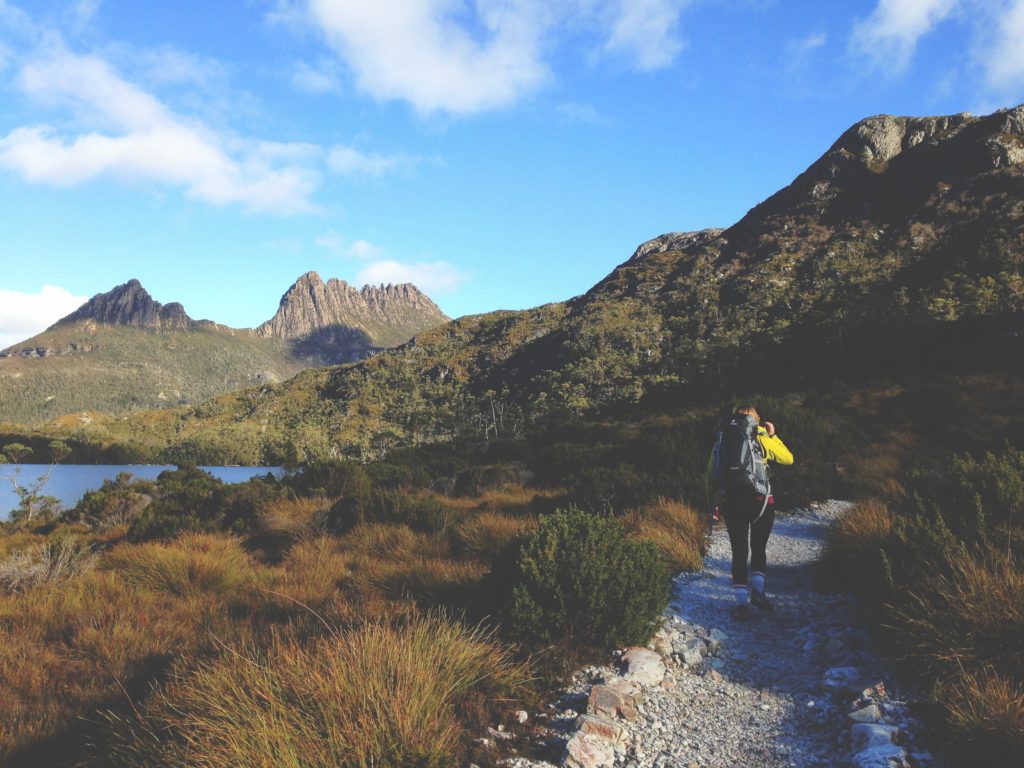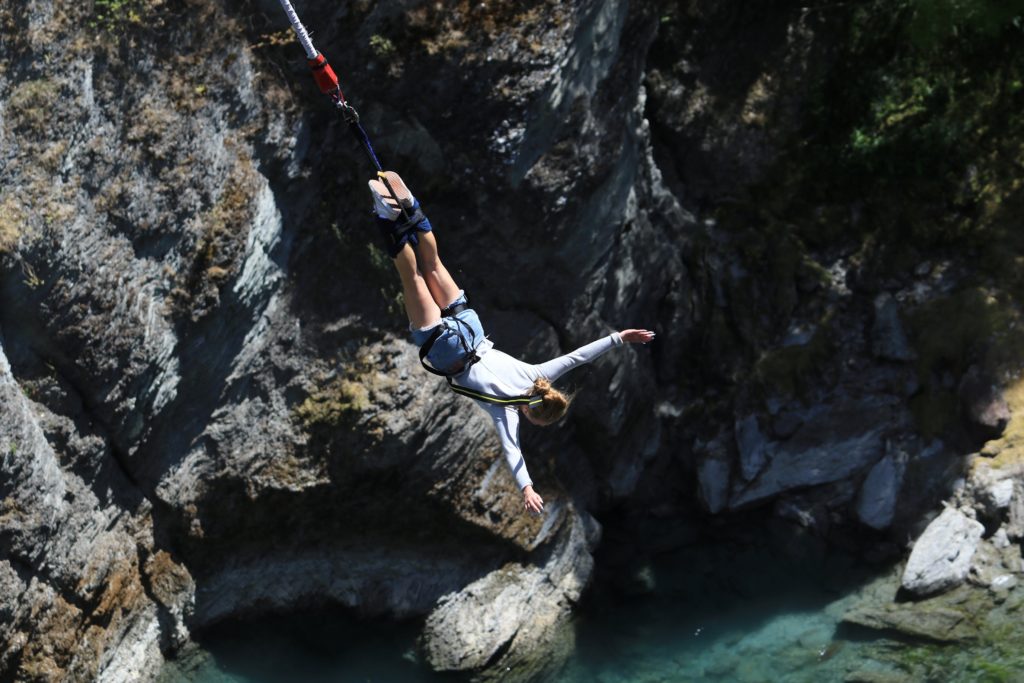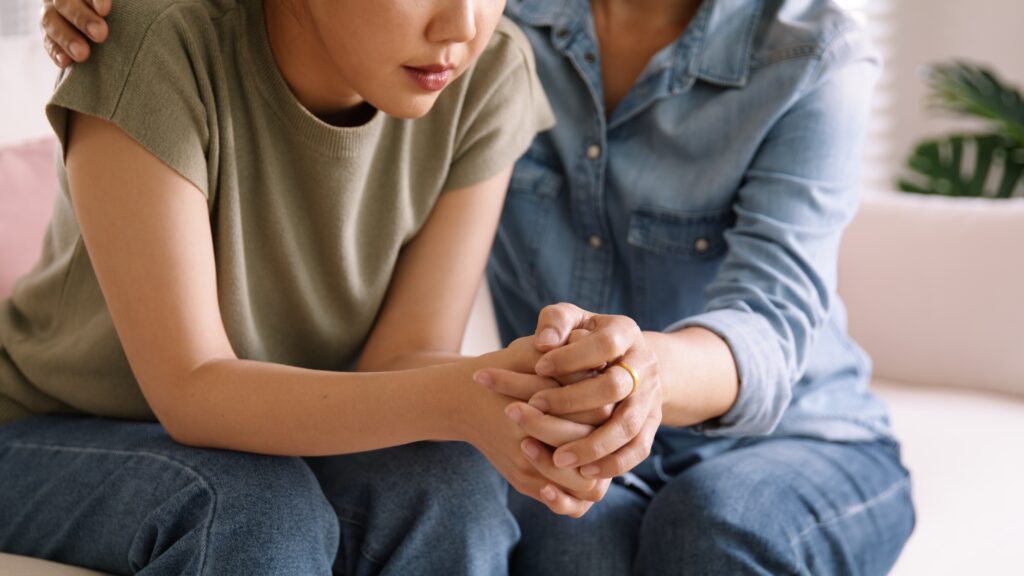Australia is an enormous country full of incredible natural wonders to explore, including big tourist attractions, like Kakadu National Park, Bondi Beach and Uluru. If you’re hoping to make the most of the bush and the beach while you’re in Australia, there are a couple of things to know first.
Australia is a pretty safe country, and serious incidents are relatively rare. But, it pays to be prepared ahead of time to make sure you have a fun experience. The emergency number in Australia is 000, so don’t hesitate to call if you need help from police, ambulance or fire services. Read on for more tips and tricks to stay safe in the outdoors.
Bushwalking

Australians love to bushwalk. It’s the perfect way to see the natural flora and fauna, and there are lots of gorgeous parks and reserves close to capital cities.
Preparing ahead of time
It pays to be prepared before you hit the track. Firstly, find a walking buddy! Avoid going bushwalking alone, just in case you need another person to help you out if you get lost or injured.
Next, you should search online (on your state’s National Parks website, for example) to find a walk that is suitable for your level of experience, and check the weather. It’s best to rely on a paper map or an app that’s available offline, as your phone may not have reception once you’re out in the bush. Once you’ve decided where you’re going, let someone else know your plans so they can provide that information in case of an emergency.
What to pack
Aside from plenty of tasty snacks, there are a few key things to take with you on your hike. Wear comfortable shoes, a hat and sunscreen to protect yourself from the sun. As a general rule, you should take around half a litre of water for every hour you expect to be bushwalking. You should also pack a basic first aid kit, warm clothes, a raincoat and insect repellent. You might also want to consider a portable power bank in case your phone runs out of battery, and even a paper map in case you can’t get phone reception.
Local wildlife
One of the best parts of bushwalking is getting up close and personal with native animals like kangaroos, wombats and echidnas. If you encounter any of these animals, stay a couple of metres back and try not to disturb them. Don’t feed or touch them, as you may injure the animal or yourself.
The chance of coming across a venomous snake or spider is pretty low, but it does help to be prepared in advance so you know what to do in case you do encounter one. There’s no need to panic if you spot a snake or spider; instead, just try not to make any sudden movements, slowly back away, and find another path. Before you go bushwalking, you can also learn how to treat a snakebite on the Australian Government’s HealthDirect website.
In an emergency
Most popular walking trails are well-signposted, so you should be able to find your way quite easily. But, it’s always worth keeping an eye on major landmarks and being aware of your surroundings, just in case you do wander off the track. If you get lost and you have phone reception, stay where you are and call for help. If you don’t have reception, attempt to retrace your steps to find the trail or get back to a road.
Bushfires and floods can also occur in Australia. Before you set off on your walk, make sure to check your state’s National Parks website for information on park conditions and track closures. You can also visit the Bureau of Meteorology website for up-to-date weather forecasts, warnings and alerts, including fire danger.
If you do find yourself in the midst of an extreme weather event, try to stay calm. If you see or smell uncontrolled smoke or fire, follow the trail you are on to the nearest road and flag down a car for help. Stay close to the ground to avoid inhaling smoke. In a flood, you should move to higher ground and wait for the water to recede. Never attempt to cross a flooded creek in a car or on foot, as there may be strong currents flowing under the surface.
Road Trips

During your time in Australia, you might want to hit the road and venture somewhere a little off the beaten track. Just note that driving in Australia can be different from other countries. For a start, Australians drive on the left side of the road. The distances between cities and towns can also be huge. The trip from Sydney to Uluru is around 30 hours, while driving Sydney to Brisbane will take over ten hours. With such long distances, it pays to be prepared if you’re going on a road trip.
Road rules and licensing
Before getting in the driver’s seat, you should double-check the road rules in Australia. Foreign licences in English are valid for driving in Australia for visitors for up to three months, but if your licence is not in English, you will need an International Driving Permit.
Planning your trip
To prevent fatigue, plan out your trip to make sure you’re not driving for more than two hours without a break. You should also find out where you can fill up the tank, to ensure you don’t run out of petrol on the road. Make sure you carry enough water for the trip, check the car has a spare tyre and learn how to change it.
On the road
In rural areas, you might end up driving on dirt roads. Most of these are OK to use if you have a four-wheel drive, as long as you take it slow, but some can be very sandy, corrugated or flooded. If you’re unsure about road conditions, check for alerts online or stop in the nearest town and ask. Always respect road closures and stop and look in both directions at train crossings, even if there are no lights or barriers.
You may also come across animals like kangaroos, cattle or wombats on the road. At dusk, dawn and at night, these animals tend to be more active and harder to see. If you come across a big animal and can gently brake or swerve to avoid it, do so. But, in some situations you will not have time to react safely. Rather than suddenly swerving or braking and risking losing control of the car, just continue on the road and hope the animal is able to get out of the way.
Roadside assistance
The NRMA offers roadside assistance to drivers in NSW and the ACT for a small monthly fee, or free if you are under 2o and register for the Free2Go program. In Victoria, it’s the RACV and in Queensland, the RACQ. There are specific agencies for each of the other states. For your own safety, avoid hitchhiking.
Beaches and Rivers
With Australia’s beaches some of the most iconic in the world, naturally, you’re going to want to spend some time enjoying them.
Protect yourself
Whether you’re at the beach or going for a hike, it’s always smart to protect yourself from the sun. Go for SPF 50+ sunscreen and cover up with clothing and a hat to protect your skin from UV rays – even on a cloudy day. If you get burnt, you can buy aloe vera gel at the pharmacy or supermarket, which provides some welcome relief.
Swimming safety
Popular spots at rivers usually have signs to indicate where it is safe to swim. Just make sure to avoid fast-flowing or deep water, and always test the depth before jumping in. Swimming near waterfalls can be a little tricky due to the currents and hidden rocks, so make sure to take someone with you if you plan to swim around them.
Many of Australia’s beaches are patrolled by lifeguards during peak hours. Several beaches also often have signs indicating any hazards or risky conditions. At patrolled beaches, you will see red and yellow flags signalling that it is safe to swim. They’re designed to show you which part of the beach is best for swimming, so try to stay between them.
A few smaller beaches don’t have lifeguards on duty. Unless you’re a very strong swimmer with experience in the ocean, you’re better off not swimming at unpatrolled beaches. Also be aware of unsafe currents, called rips, which can form at any beach. Rips can be identified as a patch of darker, calm water without breaking waves. This part of the ocean is where the water is flowing fast away from the beach and can drag a swimmer out with it.
If you get caught in a rip, try to relax and don’t exhaust yourself fighting against it. Float as much as you can to conserve your energy and raise your hand to get the attention of a lifeguard or fellow swimmer. If no one is able to rescue you, try to swim perpendicular to the direction the rip is pulling you to get out of it and then swim back to shore.
Marine creatures
While it’s generally safe to swim in Australian waters, there can be a few sneaky creatures lurking beneath the surface. Jellyfish are the most common, with stingers regularly washing up on Australia’s east coast. You may be able to see the presence of jellyfish on the sand and the lifeguards will close the beach if they know jellyfish are around.
If you get stung, use the tips of your fingers to remove the stinger. The pain should only last for 30 minutes or less. Be careful not to touch your face or other parts of your body, as the stinger can be transferred. Wash the affected area with warm water and let the lifeguard know.
Box jellyfish and Irukandji jellyfish can be found around along the far-north Queensland coast as far south as Gladstone from around October to June. During jellyfish season, only swim at beaches with jellyfish nets or wear a full-length stinger suit. Check the North Queensland Surf Life Saving website for details.
Shark attacks are very rare, and many popular beaches have nets and lookouts to keep swimmers safe. But in the north of Australia, crocodiles can be found in rivers and even the ocean. You’re best not swimming in these areas unless you’ve been told by locals or seen a sign indicating that it is safe. Find out more about water safety on the Australia tourism website.
Adventure Activities

In Australia, you can participate in adventure activities like bungee jumping, dune boarding, white-water rafting, hang gliding, caving, surfing, skydiving, scuba diving and rock climbing. If you’re interested in these kinds of activities, you should always choose a reputable and certified tour operator. Read reviews online and ask questions before you sign up to ensure an enjoyable experience.
Keep these safety tips in mind and you’ll be guaranteed to have a fun, stress-free time in the Australian outdoors.
As a member of Sonder, you can use the “Track My Journey” function in the Sonder app, which enables Sonder’s 24/7 Support Centre to remotely monitor your journey. If your movements don’t match your intended route or estimated arrival time, Sonder will give you a call to check that you’re safe. Through the app, you can instantly contact Sonder’s highly trained professionals should you find yourself in a situation where you’re lost, confused or concerned for your safety, but not in need of urgent 000 assistance. For more information, visit Sonder’s website.







